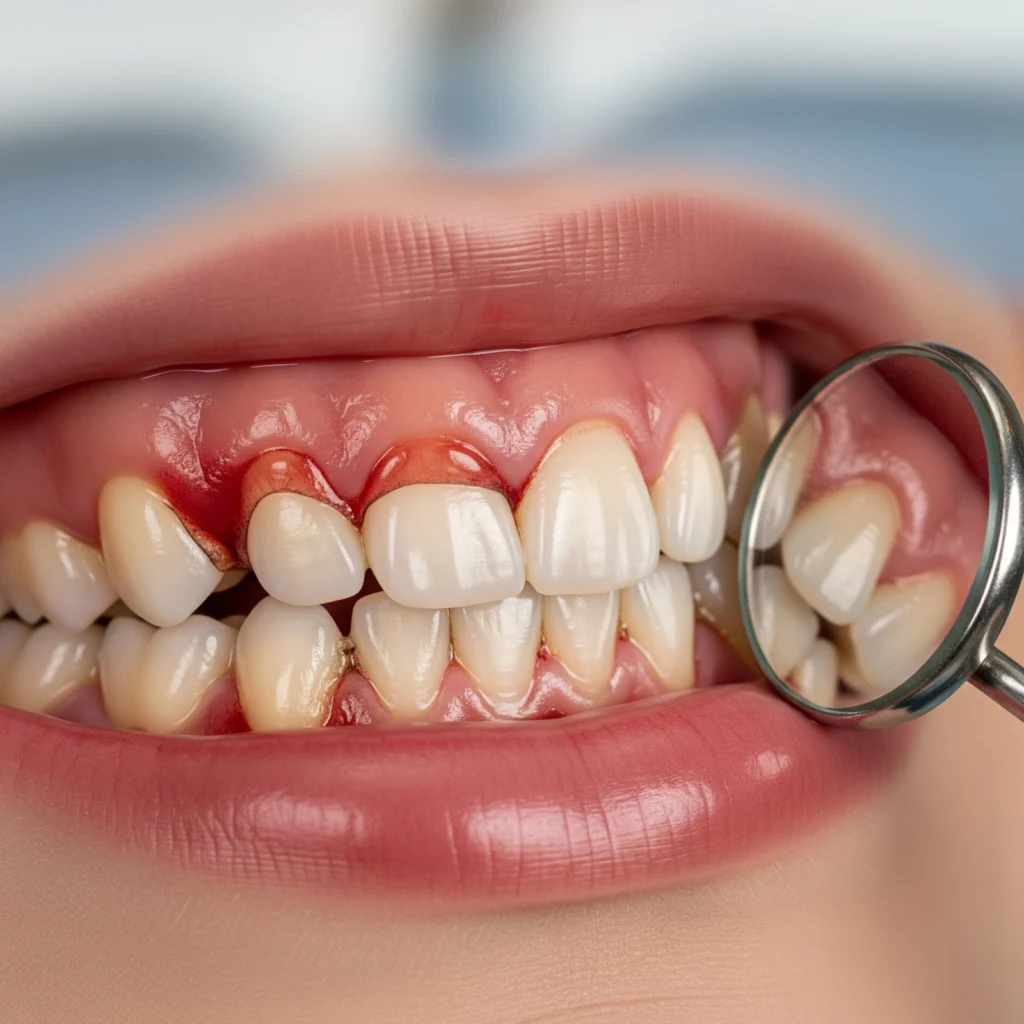Gingival Hyperplasia is a dental condition marked by an abnormal overgrowth of gum tissue around the teeth. This enlargement may appear gradually or suddenly, often interfering with routine oral hygiene and affecting both appearance and function. Although it may seem like a cosmetic concern, this gum swelling can increase the risk of periodontal infections if left untreated.
Fortunately, by understanding the causes, symptoms, and treatments for Gingival Hyperplasia, you can take active steps toward preserving your oral health and smile aesthetics.
Amelogenesis Imperfecta is a genetic disorder that disrupts the normal development of tooth enamel, impacting both baby and adult teeth. Unlike normal enamel, which is hard and protective, the enamel formed in people with this condition is either too soft, too thin, discolored, or brittle.
There are different types of enamel hypoplasia, and Amelogenesis Imperfecta is one of the more severe forms. The condition can vary in presentation but always stems from abnormalities in the genes responsible for enamel formation.

Gingival Hyperplasia, also referred to as gum enlargement, can be caused by various factors. One of the most common triggers is the use of certain medications such as anticonvulsants, calcium channel blockers, and immunosuppressants. These drugs stimulate an abnormal growth of gum tissue, especially when combined with poor oral hygiene.
Additionally, hormonal changes, plaque buildup, systemic diseases like leukemia, and hereditary conditions can also lead to this condition. In some cases, no specific cause is identified, and the condition is considered idiopathic.
Recognizing the different forms of Gingival Hyperplasia helps tailor the appropriate treatment. The main types include:
Each type presents differently, but all require timely evaluation to prevent gum infection or structural damage to the teeth.
It’s important to recognize the signs of Gingival Hyperplasia early. The condition may start as slight swelling but gradually cause discomfort or aesthetic concerns. Common symptoms include:
While not always painful, severe gum overgrowth can lead to loose teeth, bite changes, or even tooth loss if ignored. Thus, prompt action is crucial.
Diagnosing Gingival Hyperplasia starts with a detailed dental examination. Your dentist will assess your medical background, current medications, and oral hygiene routine. In many cases, the diagnosis is clinical. However, an X-ray or biopsy may be advised to determine the underlying cause or rule out more serious conditions.
During the evaluation, the dentist assesses the extent of gum tissue overgrowth, plaque levels, and periodontal health. This step ensures a precise and customized treatment plan.
Managing Gingival Hyperplasia relies on the extent and underlying cause of the gum enlargement.Fortunately, there are several effective methods available:
1. Improving Oral Hygiene
One of the first steps involves controlling plaque and maintaining excellent oral hygiene. Brushing twice daily, flossing, and using antimicrobial mouthwashes can reduce inflammation and limit further growth.
2. Professional Dental Cleaning
Routine scaling and root planing help remove hardened plaque (tartar) that contributes to gum irritation.This thorough cleaning method is usually suggested as an initial step.
3. Adjusting Medications
If the cause is drug-induced, your dentist may coordinate with your physician to adjust or change your medication. Once the offending drug is stopped or replaced, gum tissue may gradually return to normal.
4. Surgical Intervention
In more advanced cases, surgical options such as gingivectomy or flap surgery may be necessary. These procedures involve removing excess gum tissue and reshaping the gums for improved function and appearance.
5. Laser Therapy
Laser-assisted gum reshaping offers an advanced method for treating gingival hyperplasia. It allows precise removal of overgrown tissue with minimal discomfort and a quicker healing time.
Each treatment plan is personalized to ensure optimal results while prioritizing patient comfort.
Although not all cases of Gingival Hyperplasia can be prevented, there are several steps you can take to reduce your risk:
Consistent care helps prevent complications and supports long-term gum health.
Gingival Hyperplasia may begin as a minor gum concern, but if left unchecked, it can evolve into a condition that threatens both dental health and smile aesthetics. Whether due to medication, inflammation, or genetics, the key to managing gingival hyperplasia lies in early recognition and targeted treatment.
Fortunately, advances in dental care have made diagnosis and treatment more accessible and less invasive. From improved hygiene practices to surgical correction, solutions are available to restore your gums to optimal health.
If you’re noticing changes in your gum appearance or experiencing discomfort while brushing, it’s time to consult with experts who understand your needs. Choose the Best dental clinic in Kukatpally Hyderabad for compassionate care and advanced gum treatments tailored just for you.
Yes, especially when caught early. Mild cases may improve with better hygiene or medication changes, while advanced cases might need surgery.
It can occur in children, especially if caused by medications or inherited conditions.
It can return if the root cause is not addressed. Regular monitoring and good hygiene reduce this risk.
Gum surgery is typically done using local anesthesia. Post-procedure discomfort is usually mild and easily controlled with medication.
If untreated, severe gum overgrowth can affect the underlying bone and tooth support, increasing the risk of tooth loss.
Hyderabad : +91 6305 971445
Anantapur: +91 70758 90089
Goa: +91 83266 32500
Mon to Sat 10:00AM to 8:00PM
Sun 10:00AM to 12:00PM

Our goal is to provide friendly, caring dentistry with the highest standards in general, cosmetic, and specialist treatments. We strive to be the best dental hospital for comprehensive oral care.
We use advanced dental technology to deliver safe, precise, and painless treatments for every patient.